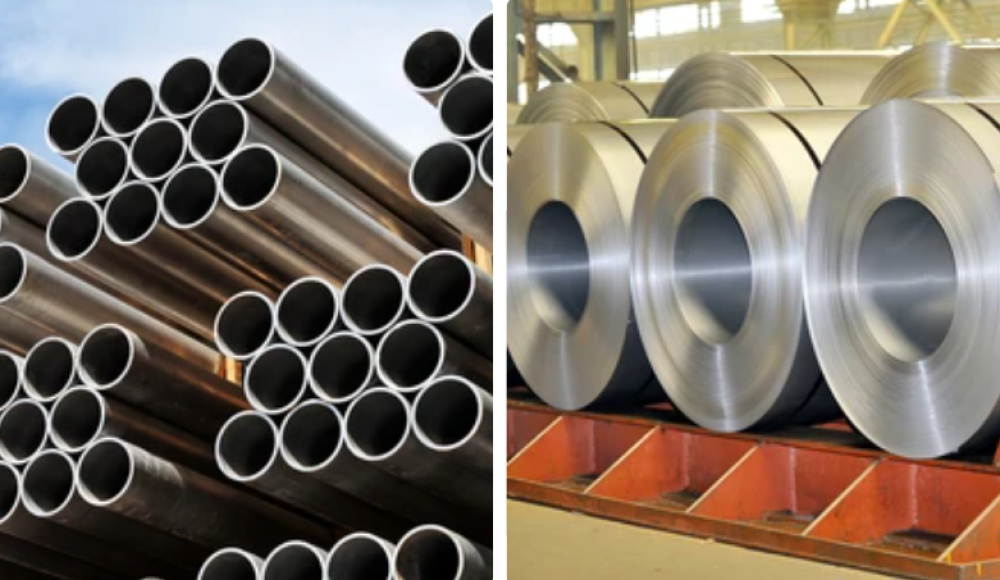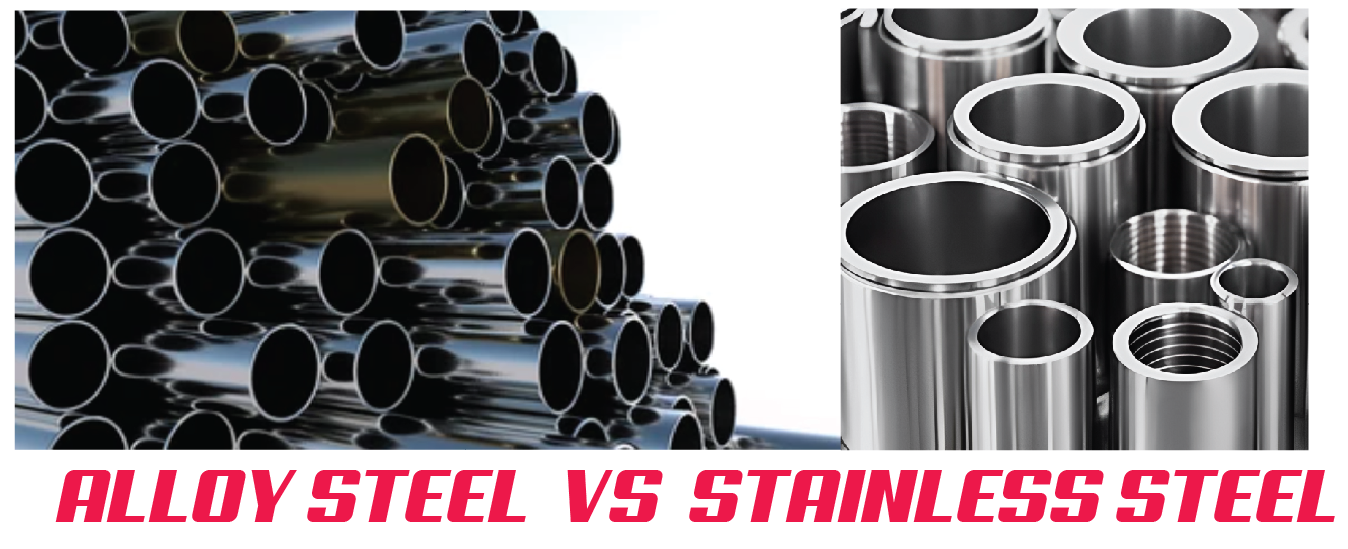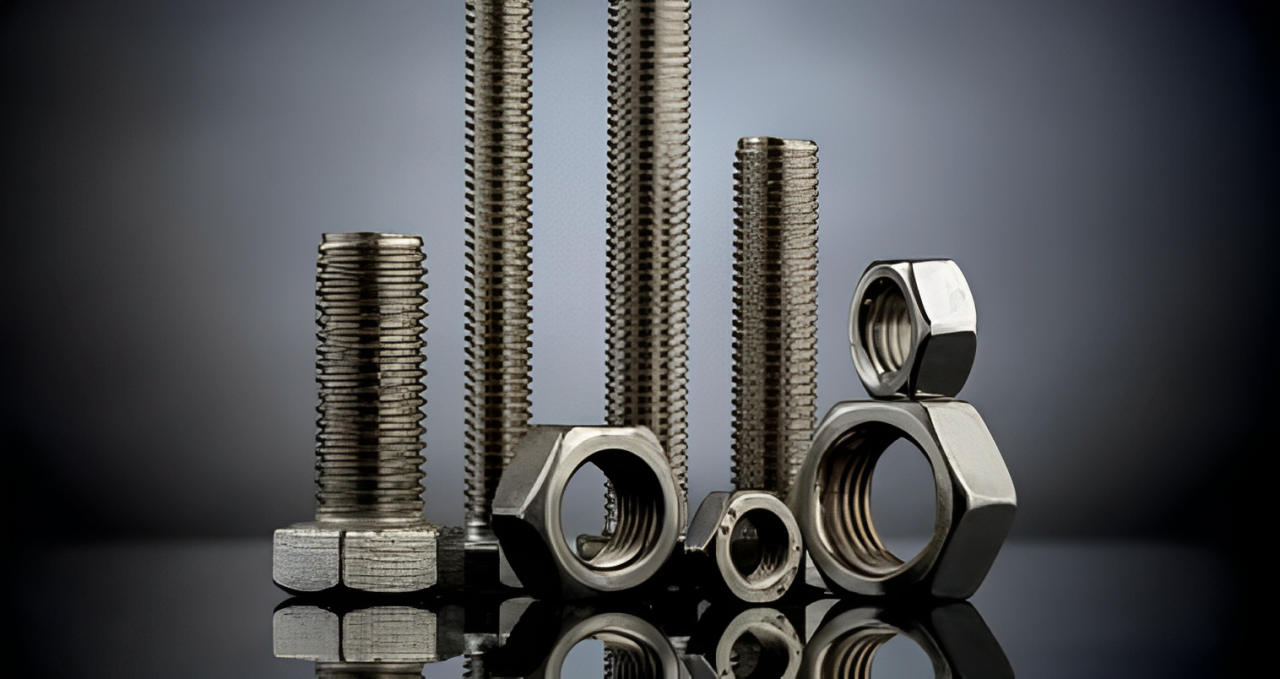Como é amplamente conhecido aço desempenha um papel em muitos ramos industriais, para construção, fabricação diferente, e indústria automotiva. Os vários tipos de graus de aço disponíveis hoje incluem aço ligante e aço inoxidável, entre outros produtos, uma vez que esses produtos são catalogados para usos devido às suas características flexíveis e altos níveis de durabilidade. Mas então cada tipo de aço possui recursos exclusivos que o qualificam para determinadas aplicações. Neste artigo, você descobrirá o que são os materiais de aço e aço inoxidável, as diferenças de seus tipos, e dicas úteis para decidir quando usar cada material para sua produção de peças.
O que é aço de liga?
Aço de liga refere -se a aço com um ou mais elementos de liga, ou seja. manganês, cromo, níquel, molibdênio, vanádio, e silício. As quantidades desses elementos são geralmente diferentes e geralmente compreendem entre um e cinquenta por cento. Como resultado direto, melhora as características de força, trabalhabilidade, dureza, corrosão, e desgaste. A aço de liga é aplicada em indústrias que exigem força e altos retornos que incluem; aviação, automóveis, e setores mecânicos.
O que é aço inoxidável?
Aço inoxidável é um material usado na construção porque é uma liga de aço que contém nada menos que 10, ou 5% cromo. Então, Ele garante proteção de corrosão excepcional através da camada de óxido de cromo Cr2O3. Ele também tem outros ingredientes, incluindo níquel, e molibdênio que também aumentam sua capacidade de não contrair a ferrugem, coloração, e corrosão. Então, As qualidades mais importantes que os clientes valorizam são sua aparência, propriedades sanitárias, e resistência, É por isso que o aço inoxidável é exigido em vários ramos. Isso pode incluir a indústria de alimentos, Produção de instrumentos médicos, construção, etc..
Tipos de aço de liga
Então, Aqui estão as diferentes formas de aço de liga e suas composições, propriedades, e usos nas indústrias.
| Tipo de aço de liga | Explicação | Propriedades principais | Aplicações Típicas |
| Aço de baixa liga | Contém < 5% elementos de liga | Propriedades mecânicas aprimoradas | Aplicações estruturais, pontes, edifícios |
| Aço de alta liga | Contém > 5% elementos de liga | Dureza superior e resistência ao desgaste | Aplicações de alto desempenho, Ferramentas industriais |
| Aço cromólico | Liga de cromo-molibdênio | Força elevada, resistência ao calor | Peças aeroespaciais, componentes automotivos |
| Aço da liga de níquel | Contém níquel para resistência | Excelente resistência a baixas temperaturas | Aplicações criogênicas, vasos de pressão |
| Aço de Manganês | Conhecido por força de alto impacto | Resistência à abrasão | Use peças (por exemplo., trituradores de rocha, Faixas ferroviárias) |
Tipos de aço inoxidável
Então, Vamos discutir os diferentes tipos de aço inoxidável na tabela a seguir.
| Tipo de aço inoxidável | Explicação | Propriedades principais | Aplicações Típicas |
| Aço Inoxidável Austenítico | O tipo mais comum; é não magnético | Excelente resistência à corrosão, conformabilidade | Equipamento de cozinha, dispositivos médicos |
| Aço Inoxidável Ferrítico | Contém cromo e um pequeno níquel | Resistência moderada à corrosão, boa formabilidade | Partes automotivas, eletrodomésticos |
| Aço Inoxidável Martensítico | Contém carbono mais alto; conhecido pela dureza | Alta resistência e dureza | Instrumentos cirúrgicos, ferramentas de corte |
| Aço Inoxidável Duplex | Combina propriedades austeníticas e ferríticas | Força elevada, excelente resistência à corrosão | Indústria de petróleo e gás, processamento químico |
| Aço inoxidável de endurecimento da precipitação | Fortalecido por tratamento térmico | Força excepcional | Componentes aeroespaciais, Ferramentas de alto desempenho |
Comparação entre aço de liga vs. Aço inoxidável
De vez em quando encontramos os termos de aço de liga e aço inoxidável. Vamos discutir as principais diferenças entre eles.
1. Resistência à corrosão
O aço inoxidável é muito imune à corrosão pelo conteúdo do cromo. Tende a formar uma camada de óxido, tornando -a adequada para umidade ou qualquer outro ambiente de corrosionia. No entanto, Para a liga de aço para oferecer o mesmo nível de resistência, ele deve ser colocado em tratamento que não seja inerentemente muito resistente.
2. Força
Dependendo do tipo de elementos de liga usados, Podemos melhorar a resistência à tração no aço de liga para um alto desempenho aprimorado. Além disso, O aço inoxidável tem uma resistência mais alta que o aço carbono e não é mais forte que o aço de liga.
3. Custo
O aço inoxidável é um pouco mais caro que o aço de liga devido ao uso de cromo e níquel e o nível de dificuldade ao processá -lo. Por exemplo, Os artigos de aço de liga de liga podem ser mais baratos com mais frequência do que não, pois podem empregar agentes de liga mais baratos.
4. Estética
A borracha tem excelente resistência à abrasão é quimicamente resistente e é usada principalmente em meias. Aço inoxidável tem um brilhante, visual polido e é usado onde a aparência pode ser importante, ou seja. pólo. No entanto, A aço de liga não é visualmente atraente, mas mais funcional.
5. Propriedades Magnéticas
A maioria dos aços inoxidáveis não sente atração magnética e é adequada para usos onde o magnetismo é significativo. Como a maioria dos aços, Muitas folhas de liga têm o que é conhecido como 'resposta magnética', O que às vezes é desejável em usos industriais.
6. Durabilidade
A liga de aço é desenvolvida para lidar com o alto estresse, tornando -o sempre forte e durável sob pressão. A maioria do aço inoxidável oferece boa resistência contra a corrosão, mas suas propriedades mecânicas podem não ter aços de liga de alta resistência sob cargas altas.
7. Resistência ao Calor
Nos casos subsequentes em que o estresse térmico é um problema, O aço inoxidável geralmente tem um desempenho melhor, pois não perde forma sob altas temperaturas. Mas dependendo de sua formulação, Usamos aço de liga, desenvolvido especialmente para força de alta temperatura.
8. Trabalhabilidade
A liga de aço é mais fácil de trabalhar, principalmente ao projetar estruturas complexas que podem exigir trabalho sofisticado. Aço inoxidável, ainda mais forte, também é mais pesado e mais difícil de trabalhar devido à sua dureza. Em cima disso, Tem problemas com o trabalho eletromagnético endurecendo.
| Característica | Liga de aço | Aço inoxidável |
| Resistência à corrosão | Requer tratamentos especiais; menos resistente | Altamente resistente devido ao conteúdo de cromo |
| Força | Alta resistência à tração (até 250,000 psi) | Força moderada (até 200,000 psi) |
| Custo | Geralmente mais acessível ($0.50 - $ 2,00/lb.) | Mais caro ($1.50 - $ 4,00/lb.) |
| Estética | Mais funcional; acabamento geralmente fosco | Valorizado por brilhante, aparência polida |
| Propriedades Magnéticas | Retém propriedades magnéticas | A maioria das notas não é magnética |
| Durabilidade | Excelente sob estresse extremo | Durável contra a corrosão |
| Resistência ao Calor | Varia com base na composição; até 1.200 ° F. | Mantém a integridade de até 1.500 ° F |
| Trabalhabilidade | Mais fácil de usinar e fabricar | Mais desafiador para soldar e moldar |
Dicas a serem consideradas ao escolher o aço ideal para o seu projeto de usinagem
Os seguintes são fatores importantes que você considera ao escolher o aço ideal para o seu projeto.
- Resistência à corrosão: Escolha aço inoxidável para áreas expostas a água ou produtos químicos.
- Força e durabilidade: Escolha o aço de liga se for necessário ter alta resistência à tração e um certo nível de resistência.
- Custo: Os custos de aço de liga são mais baixos do que os de aço inoxidável.
- Requisitos estéticos: O aço inoxidável deve ser usado em projetos em que o produto final requer algum elemento polido e esteticamente agradável.
- Maquinabilidade: Certos tipos de ambos os materiais podem ser mais difíceis de trabalhar, de modo que a seleção depende do que é desejável para um determinado projeto.
Aplicações de aço de liga
Então, Aqui estão algumas das aplicações comuns de aço de liga:
- Componentes Automotivos: Popular para eixos de engrenagem e eixos, pois é um material resistente e forte.
- Peças Aeroespaciais: Adequado para trem de pouso de aeronaves e lâminas de turbinas por causa de suas propriedades de alta temperatura.
- Construção: Empregado em peças estruturais de alta resistência, como pontes e edifícios.
- Ferramentas: Popular em pedaços de broca, serras, e máquinas -ferramentas como resultado da dureza desse tipo de aço.
- Óleo & Indústria de gás: Aplicado em oleodutos e vasos de pressão por sua alta resistência e serviço de tração a temperaturas elevadas.
Aplicação de aço inoxidável
Então, Aqui estão algumas das aplicações comuns de aço inoxidável:
- Equipamento médico: É usado onde os instrumentos e implantes de cirurgia são aplicados devido à sua capacidade de evitar corrosão e ter propriedades higiênicas.
- Processamento de alimentos: Difundido em geladeiras, fogões, utensílios de cozinha, e embalagem de alimentos por causa de seus recursos higiênicos.
- Construção: Aplicado na construção de elevações externas, telhados, e varandas devido à dureza e aparência ornamental.
- Automotivo: Utilizado em sistemas de escape e acabamentos, Como não corroer.
- Processamento químico: Aplicado a tanques, válvulas, e tubos para lidar com produtos químicos de corrosão.
Prós e contras do aço de liga
A seguir estão os prós e contras do aço de liga:
Vantagens:
- Este material tem uma proporção de alta força / peso significa que é seguro e altamente eficiente em termos de energia.
- Resistência superior.
- Grande versatilidade em suas propriedades mecânicas.
- Boa resistência ao desgaste.
- Utilidade em várias aplicações em aplicações portadoras de estresse.
Limitações:
- Deve ser revestido ou revestido para proteger contra ferrugem e corrosão.
- Pode ser mais formidável para analisar usando uma máquina.
- É um material bastante caro que o aço carbono.
- Propenso a enferrujar se não bem cuidado.
- Não tão agradável aos olhos quanto aço inoxidável.
Prós e contras do aço inoxidável
Vantagens:
- Oferece resistência significativa à corrosão.
- Fácil de limpar e manter.
- Final brilhante para as superfícies de design atraente.
- Resistência de alta temperatura.
- Durável e duradouro.
Limitações:
- Caro do que os materiais de aço de liga para construção de itens.
- Algumas notas são difíceis de soldar e máquina.
- Vulnerável ao estresse por rachadura de corrosão.
- Não mais forte que o aço de liga em algumas aplicações.
- Mais pesado do que alguns tipos de aço.
Quando escolher a liga de aço?
- Quando seu projeto exige mais força e resistência.
- Para as aplicações submetidas a condições de alta temperatura ou carga pesada.
- Quando o custo é um problema que não pode ser esquecido e deve ser mantido no mínimo.
- Quando a corrosão não é um fator importante, ou quando esses tratamentos especiais são possíveis.
- Peças que sofrerão fadiga e esfregamento.
Quando escolher aço inoxidável?
- Para aplicações, onde o requisito é para alta resistência ao ambiente corrosivo.
- Quando a aparência e a limpeza da matéria material.
- A cerâmica depende muito do seu uso em áreas onde entra em contato com produtos químicos ou umidade.
- Em projetos onde a longevidade do edifício é importante.
- É um material suave e não magnético, altamente usado na fabricação de construção de produtos.
Conclusão
Para concluir, A liga de aço vs. Inoxless oferece vários recursos e pode ser recomendado para usos diferentes. Aço de liga é usado onde o estresse provavelmente será alto. além disso, é significativo para a força e resistência do material. No entanto, O aço inoxidável deve ser usado em aplicações eletrolíticas, onde a aparência elegante e a higiene são importantes, bem como a resistência à corrosão. Avaliar esses dois materiais e suas diferenças fornece as informações corretas. Então, Você pode escolher o melhor material para o seu projeto ao selecionar aço.
perguntas frequentes
1. Qual é a diferença entre aço de liga e aço inoxidável?
A liga de aço é famosa por sua alta resistência e resistência, enquanto o aço inoxidável é bem conhecido por sua resistência ao ataque corrosivo.
2. Qual aço é mais adequado para uso em altas temperaturas?
O aço de liga é preferido onde o calor está envolvido, pois possui melhores propriedades resistentes ao calor do que o aço inoxidável.
3. É o aço inoxidável magnético?
O aço inoxidável martensítico, por exemplo, é magnético, enquanto o aço inoxidável austenítico não é.
4. A liga de aço da liga de liga?
Sim, É fato que se o aço da liga não estiver protegido por revestimentos resistentes à corrosão adequados, Então pode enferrujar.
5. Aço inoxidável é mais difícil de máquina do que o aço de liga?
A usinagem em aço inoxidável pode ser mais difícil devido à sua força inerente extra, Embora isso dependa das notas de aço.
6. Qual aço é mais caro aço de liga ou aço inoxidável?
O aço inoxidável é mais caro que o aço carbono comum devido à sua composição mais cromo e níquel.
7. Para os quais as indústrias são os produtos fabricados em aço de liga adequados?
Aço de liga pode ser usado no aeroespacial, automotivo, construção, e indústrias petrolíferas.











1 pensei em “Liga de aço vs aço inoxidável: Um guia abrangente”